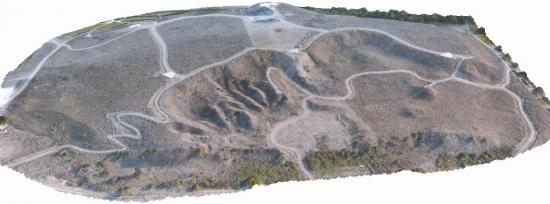New archaeology technology is changing how Biblical sites like Tel Akko are studied
Source - http://www.biblicalarchaeology.org/daily/archaeology-today/biblical-archaeology-topics/archaeology-tools-of-the-21st-century/

High-tech archaeology tools are being used at sites throughout Israel to understand better the Biblical world. This model of Tel Akko on the coast of Israel, for example, was created with advanced archaeological technology known as structure from motion-based 3D modeling.
For archaeologists like Ann Killebrew, the codirector of the Tel Akko excavations, new digital archaeology tools are transforming the study of the Biblical past. In her Archaeological Views column in the November/December 2013 issue of BAR, Killebrew writes that while the excitement of digging will always be there, fieldwork at most excavations now requires considerable experience and skill with archaeology technology, much of which was unimaginable just a couple of decades ago.
For one thing, modern advances in archaeology technology have meant that less exploration is carried out with excavation. Before a spade hits the ground, many projects, including Killebrew’s excavations at Tel Akko, conduct extensive pedestrian surveys that utilize new archaeology tools like geomagnetic survey, electrical resistivity tomography and aerial and satellite photography. The emphasis is increasingly on non-intrusive documentation of a site and concurrently less excavation.
When digging does occur, scientific archaeology tools allow archaeologists to ask new questions. On-site micro-archaeology, or information that can be documented via microscopes, is one of the more exciting developments in modern archaeology technology. Scientific analyses are increasingly being conducted in real time in field laboratories set up during the actual excavation. At sites throughout Israel, including Tel Akko, scientists from the Weizmann Institute have been working alongside archaeologists during the actual excavation season. This allows the team to harness the power of scientific analyses to address questions that traditional archaeology tools cannot even begin to explore.
Archaeology technology like Global Positioning Systems (GPS) and Geographic Information Systems (GIS) are now being used by archaeologists to precisely document every aspect of an excavation in real space. Likewise, sophisticated digital databases integrate field diaries, photos, drawings and videos. And excavations are now recorded extensively by digital cameras, laser scanners, computers, and other advanced archaeology technology. At Tel Akko, for example, Killebrew’s team has developed a new state-of-the-art 3D documentation system that uses digital cameras and photogrammetry to produce virtual reconstructions and detailed plans of Tel Akko with sub-centimeter spatial accuracy.
New archaeology tools are also revolutionizing the way artifacts are documented and interpreted. Scientists from the Weizmann Institute and archaeologists at the Hebrew University of Jerusalem recently established the Computerized Archaeology Laboratory. Utilizing high-precision scanners, highly accurate drawings and photographs can be produced quickly and affordably. These can then be used to create mathematically-based, automated pottery typologies.
By embracing these new, high-tech archaeology tools, archaeologists are opening up previously unexplored frontiers for understanding the world of the Bible.
Read more about how high-tech archaeology tools and advanced archaeology technology are improving our understanding of Tel Akko and other Biblical sites in Ann Killebrew, Archaeological Views: “Biblical Archaeology in the 21st Century,” Biblical Archaeology Review, November/December 2013.